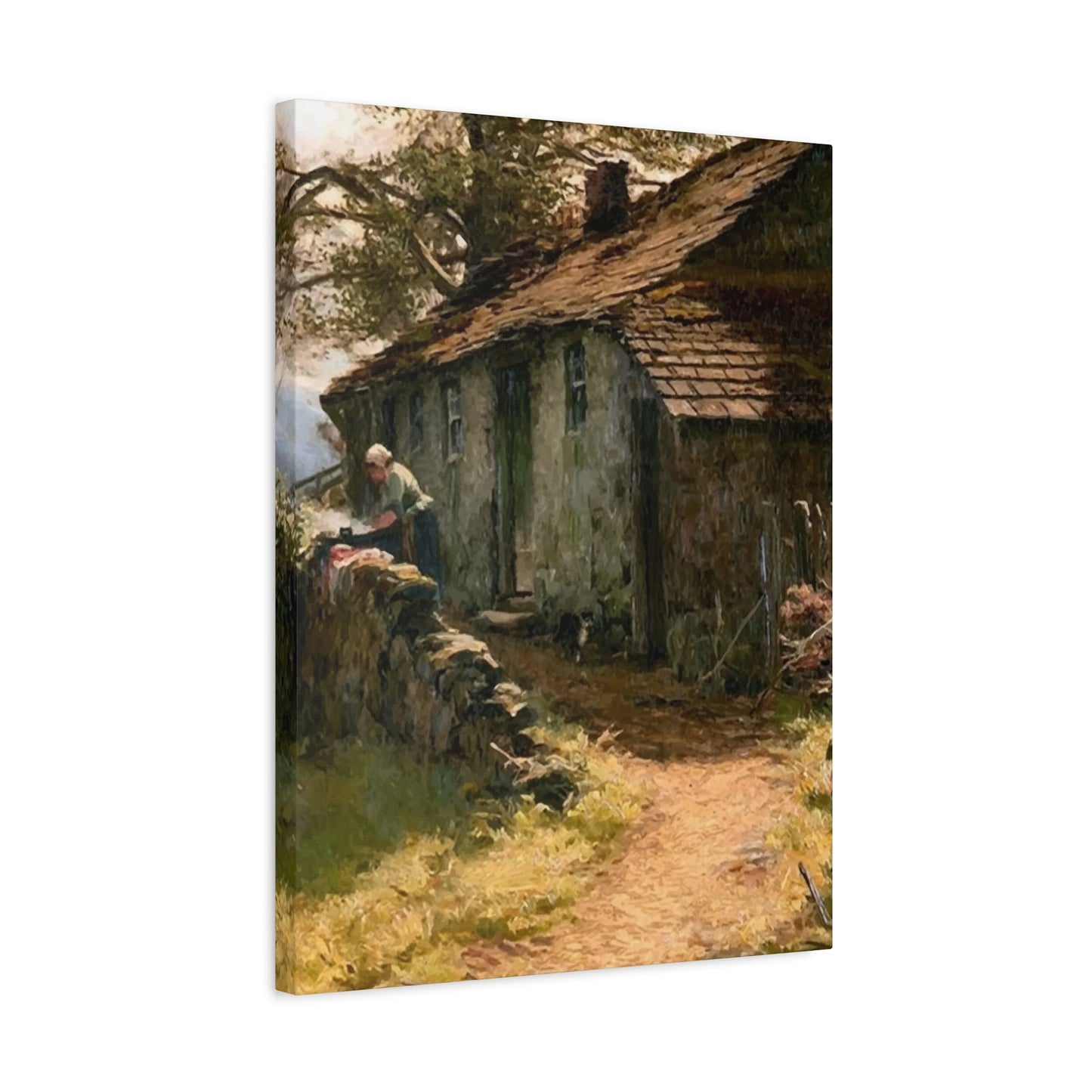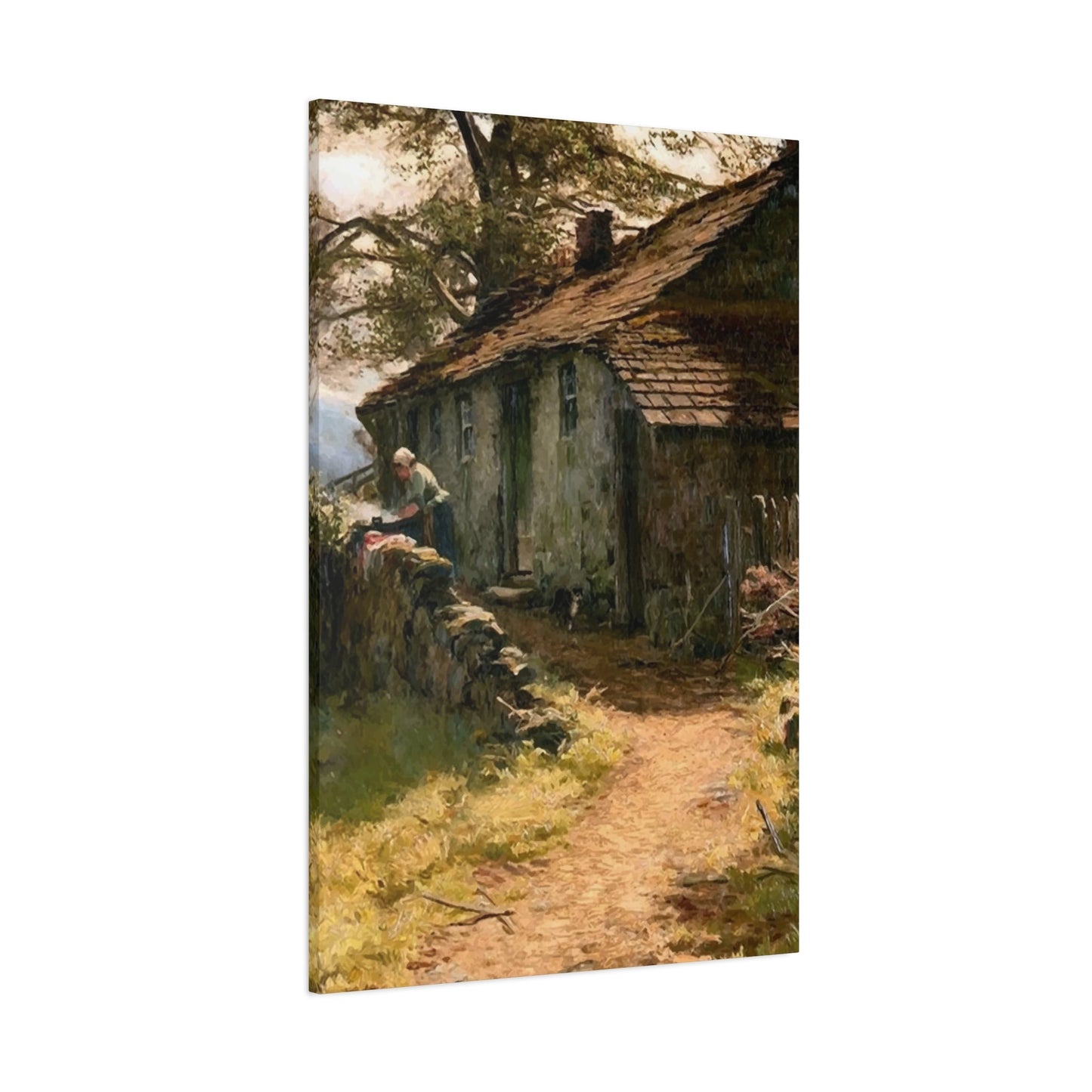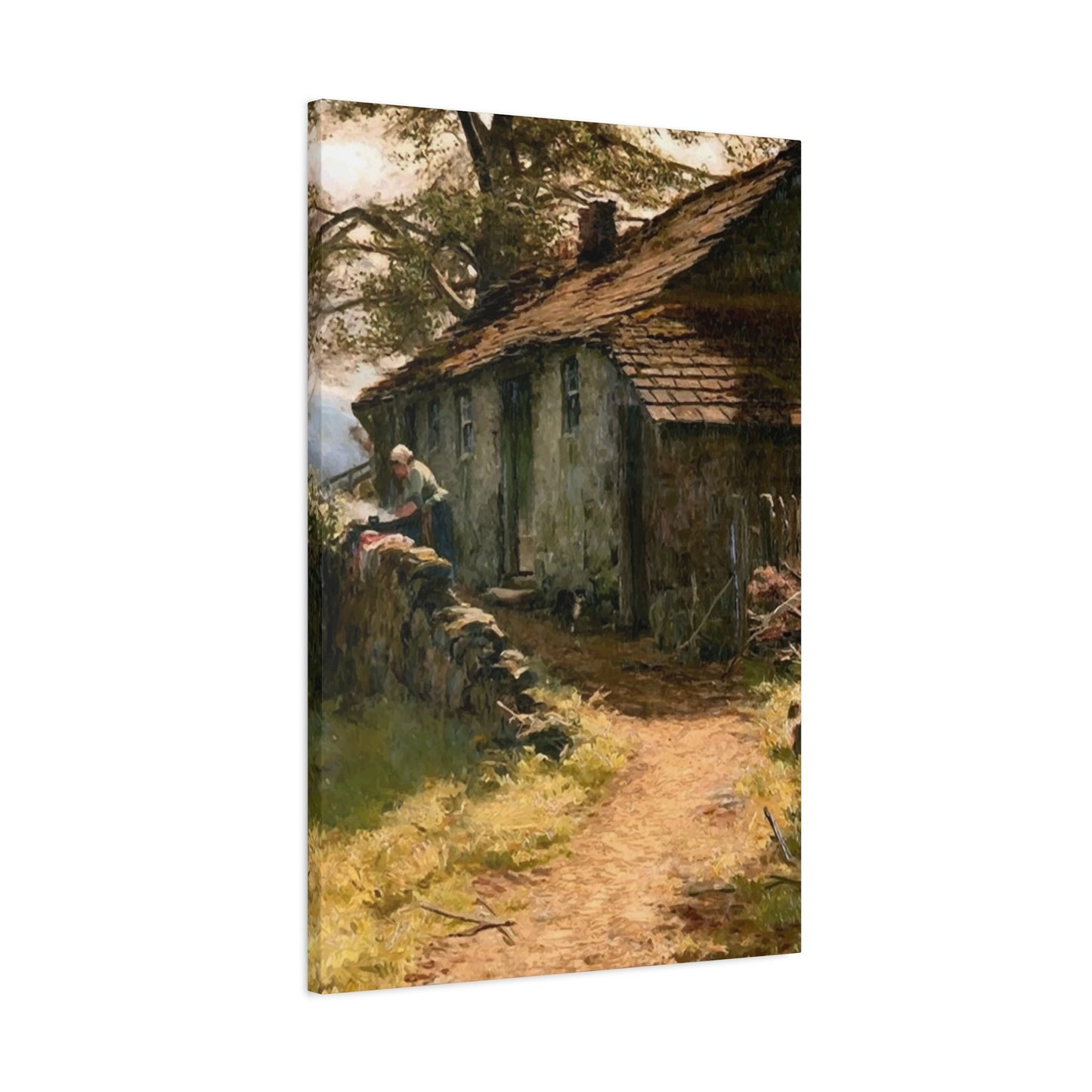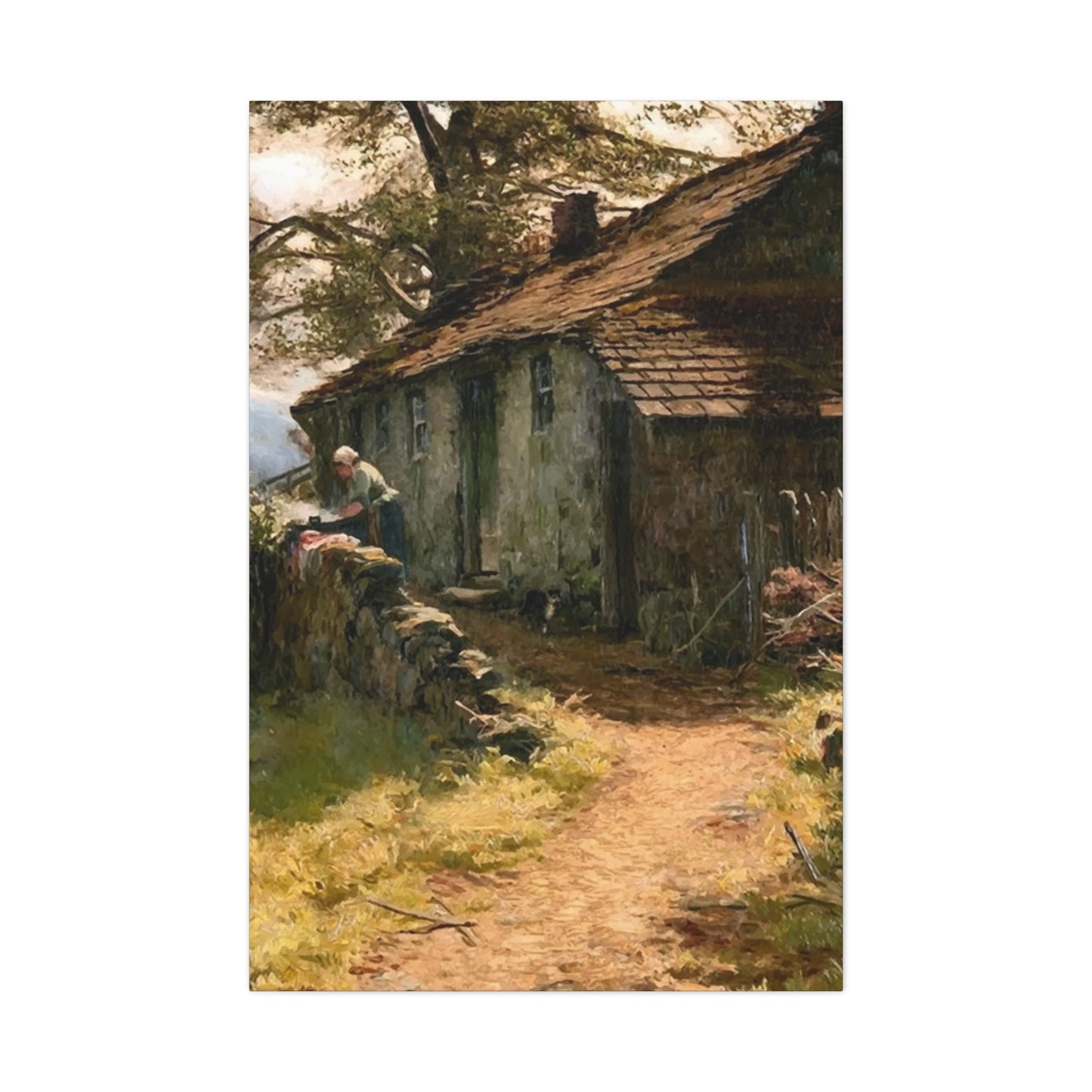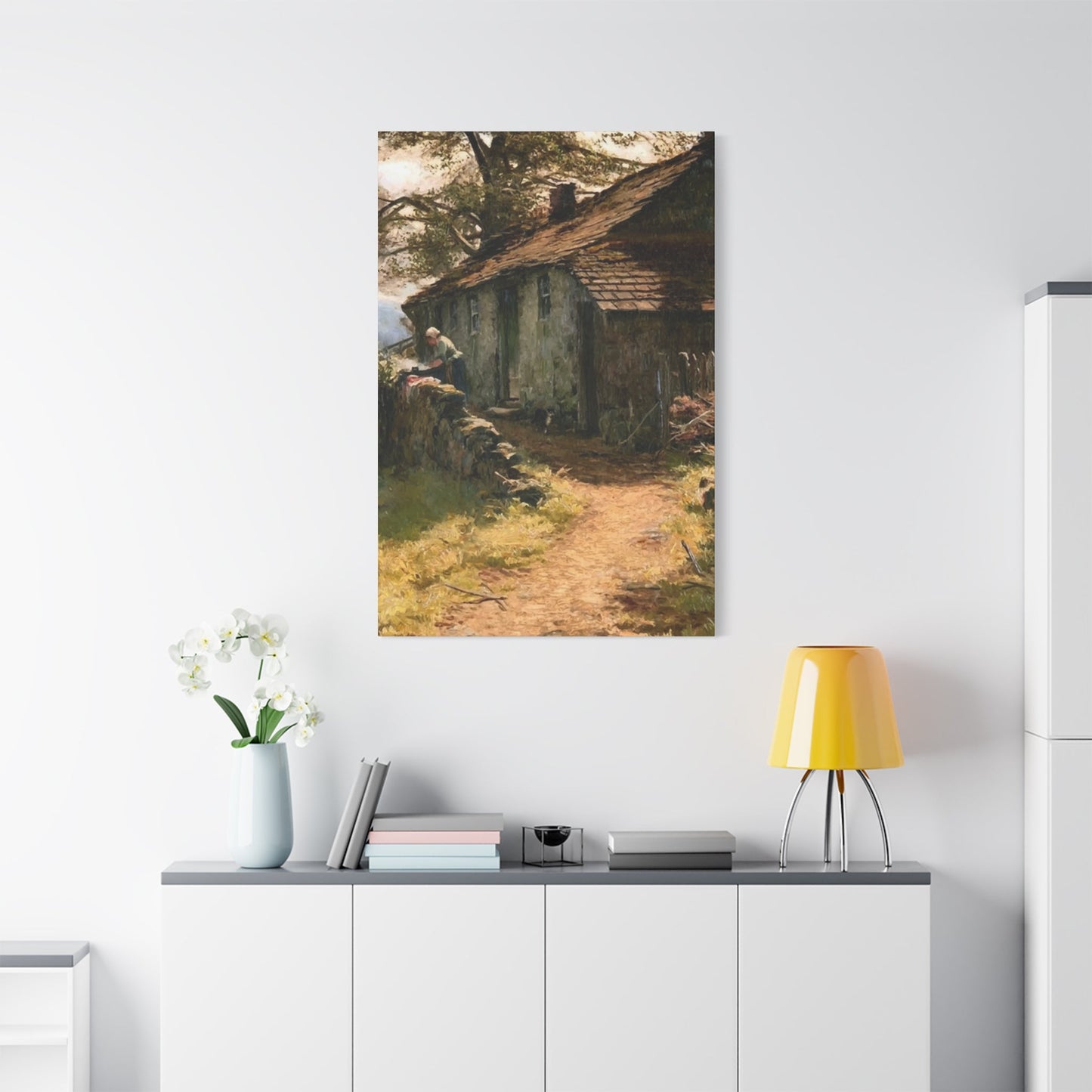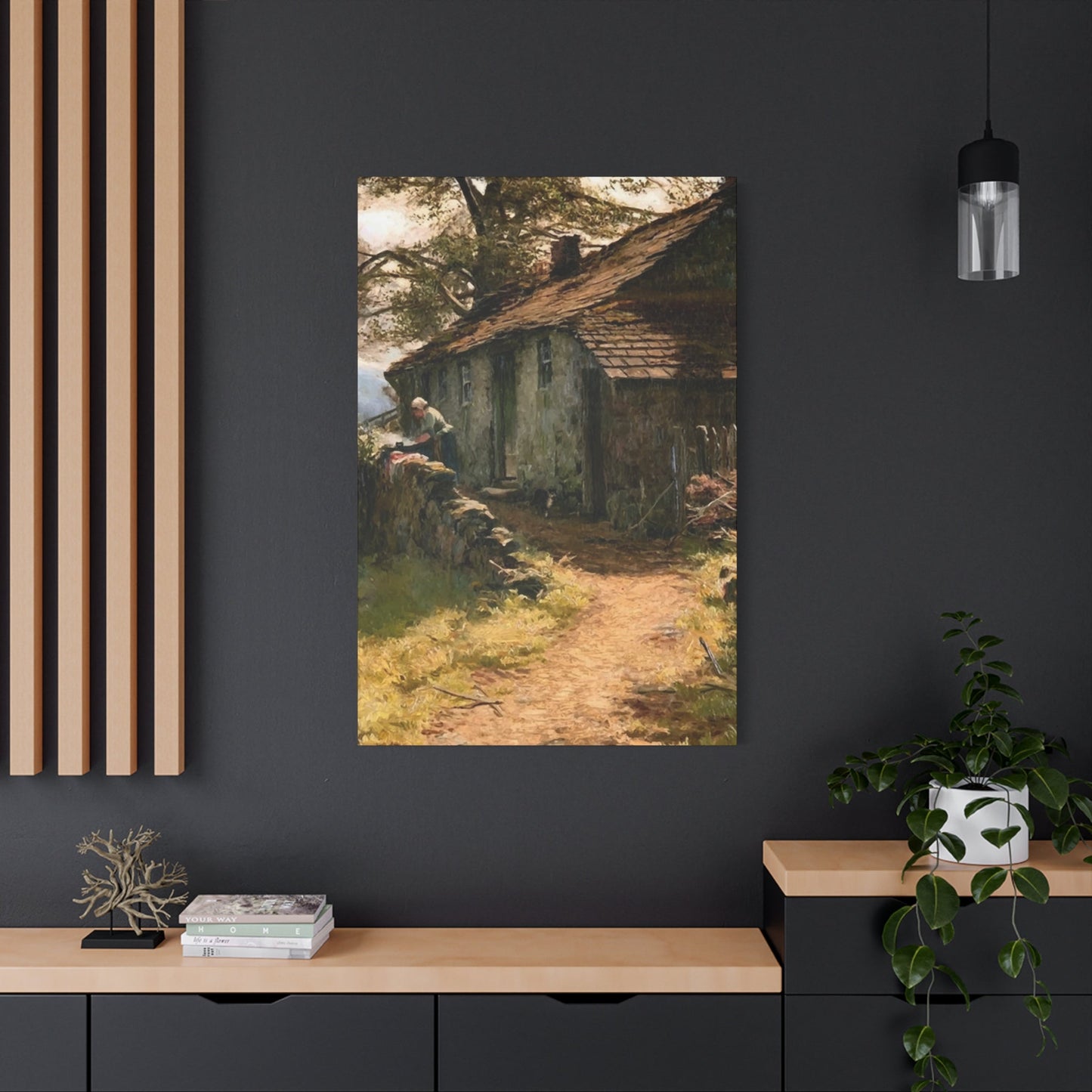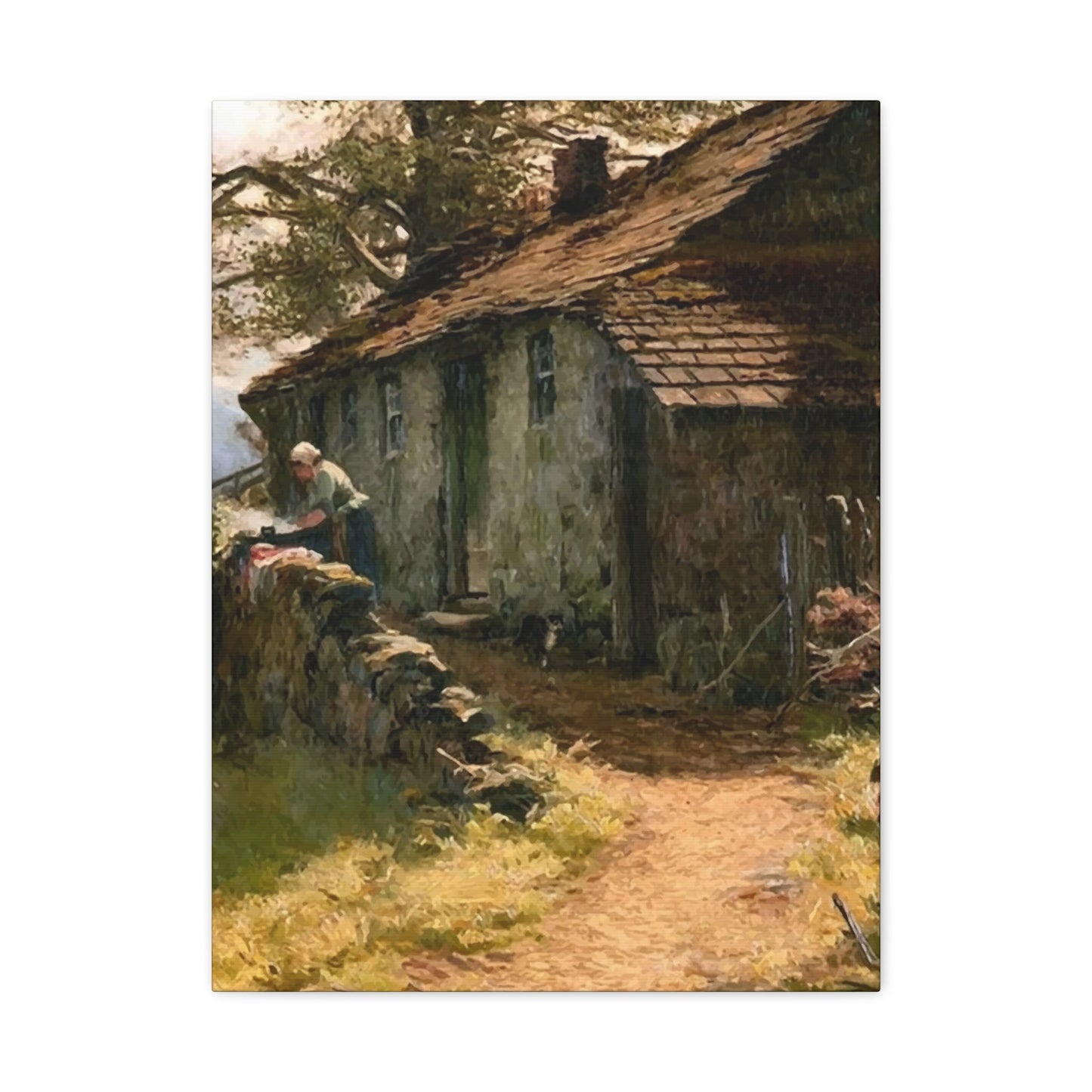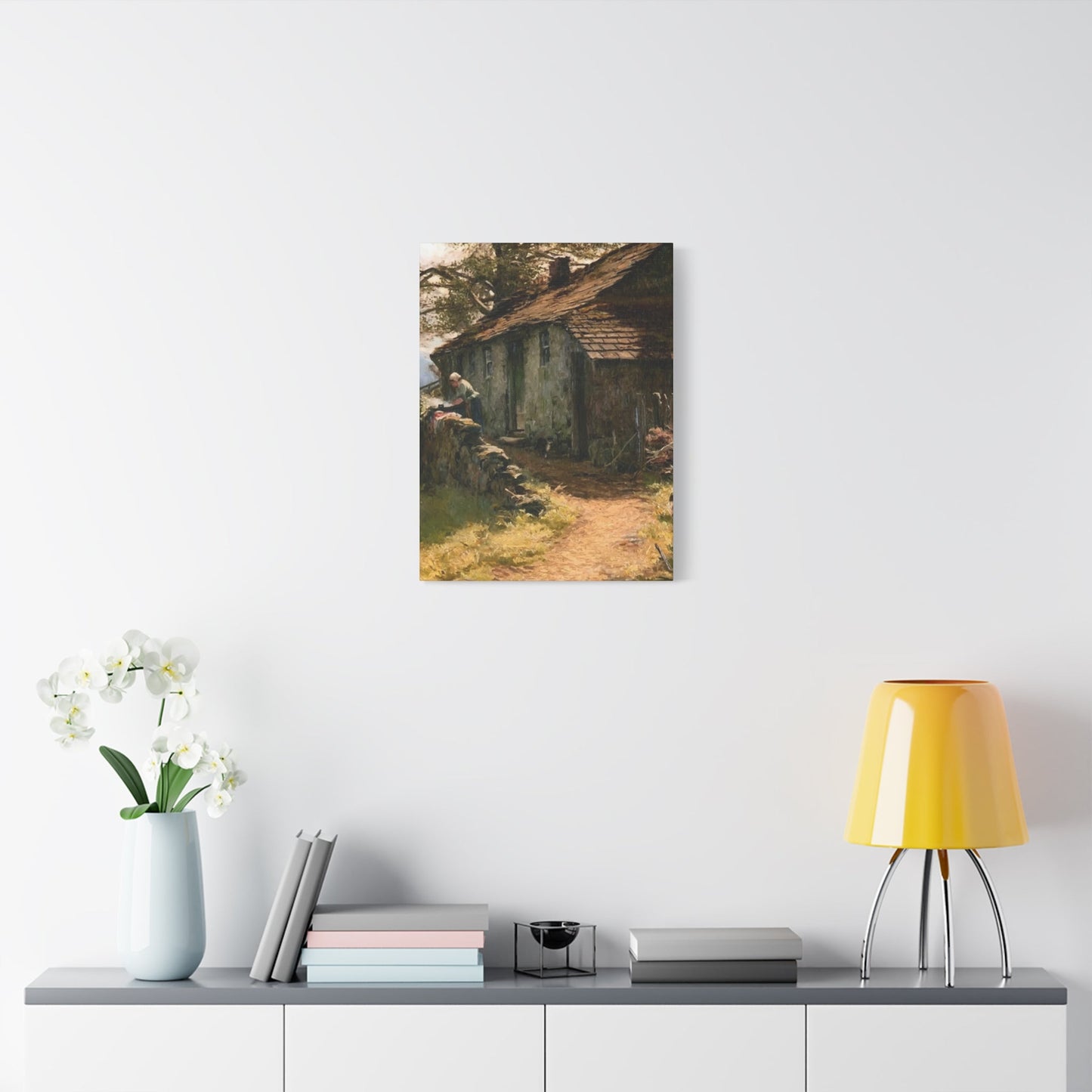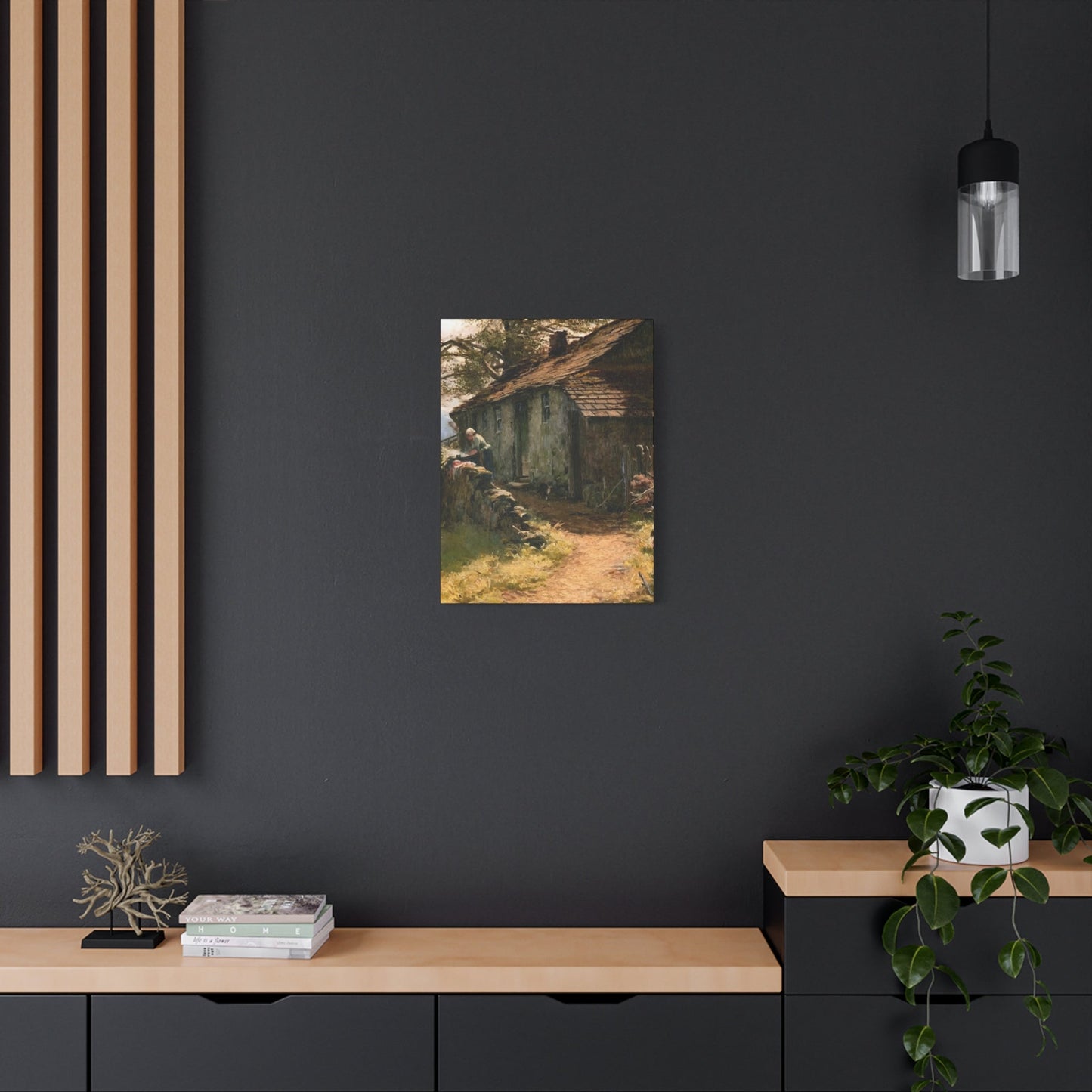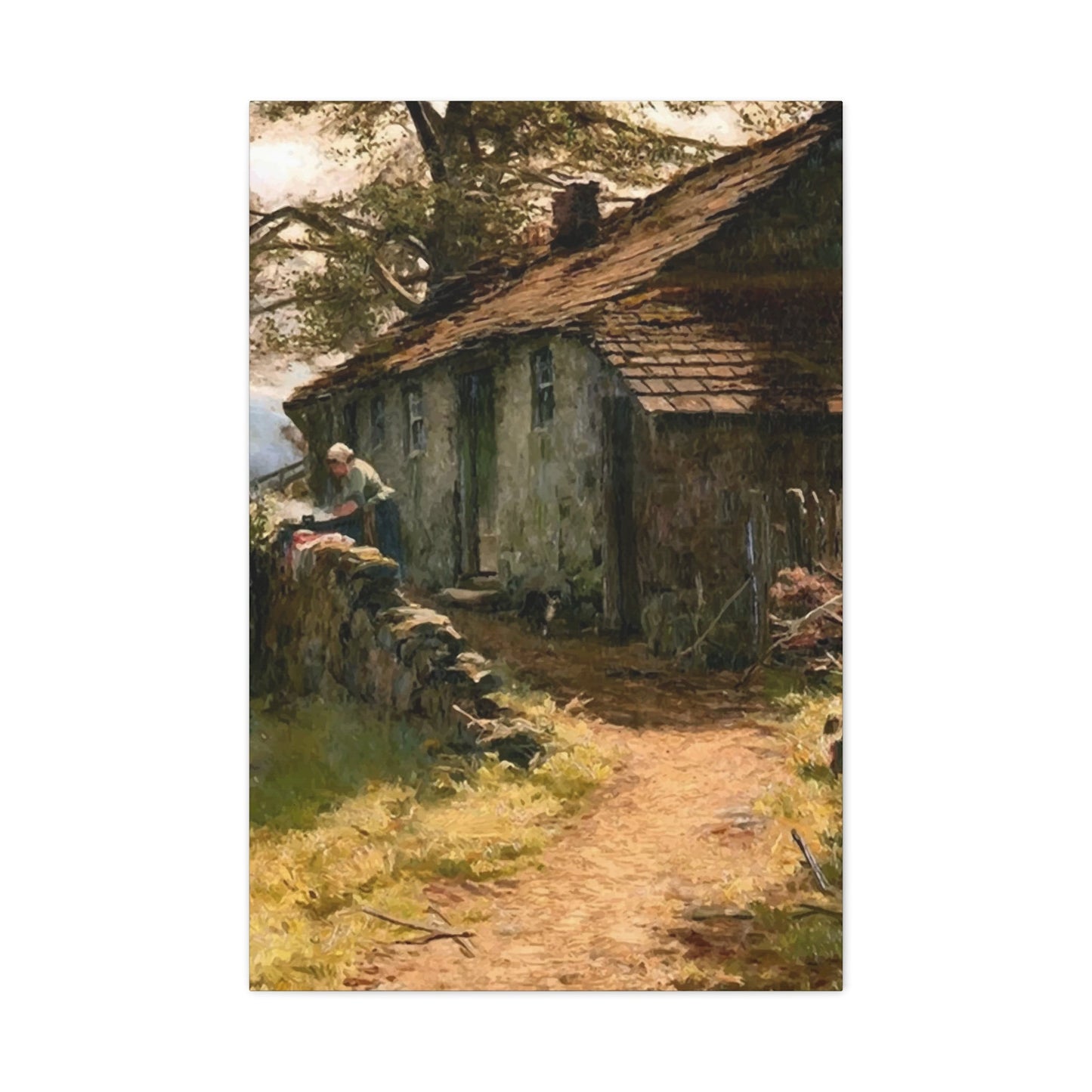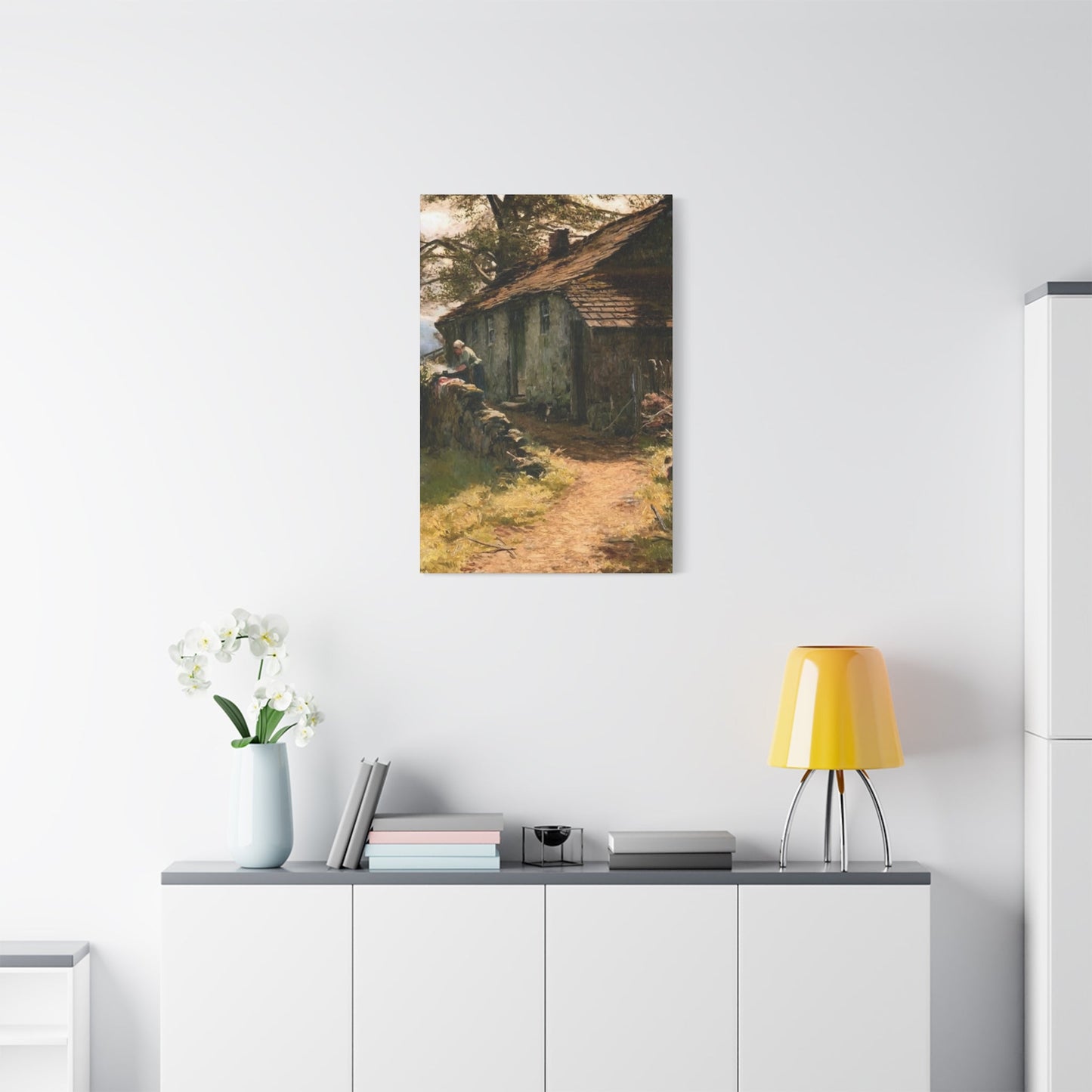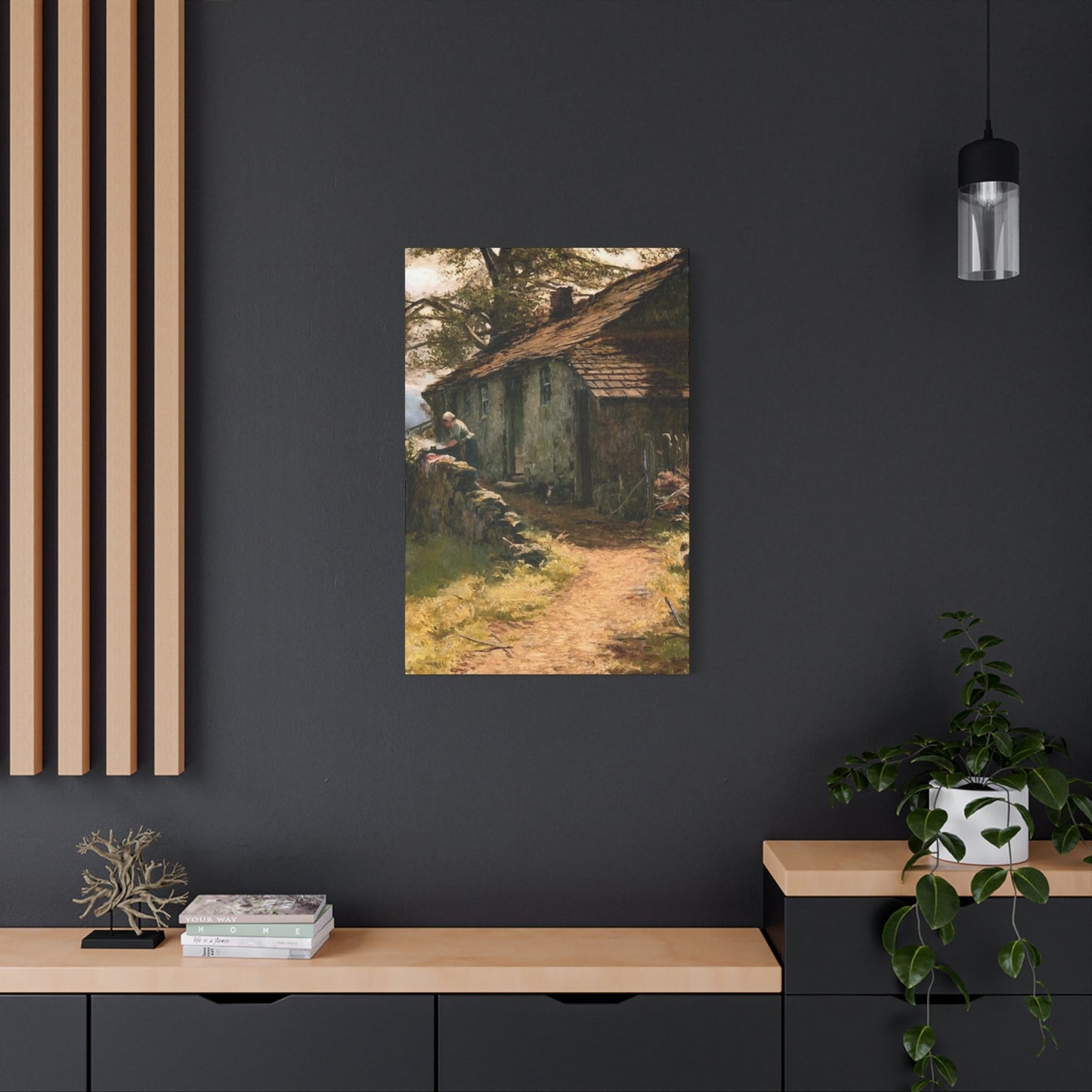Ultimate Guide to Countryside Wall Art: Transforming Spaces with Rural Charm
The magnetism of countryside wall art extends far beyond mere decoration, capturing the essence of pastoral tranquility within the confines of modern living spaces. This distinctive genre of artistic expression draws inspiration from rolling meadows, weathered barn structures, grazing livestock, and the ever-changing seasons that define rural landscapes. Each piece serves as a portal to simpler times, where life moved at nature's rhythm rather than the relentless pace of urban existence.
Rural decorative artwork encompasses an extraordinary range of subjects, from misty morning scenes across dewy fields to intimate portraits of farm animals in their natural habitats. The appeal lies not merely in aesthetic beauty but in the emotional resonance these images evoke. When homeowners select countryside wall art for their spaces, they're choosing to surround themselves with reminders of nature's enduring presence and the peaceful lifestyle that rural environments represent.
The diversity within this artistic category astounds even seasoned collectors. Traditional oil paintings depicting harvest scenes hang alongside contemporary interpretations of country living, while photographic prints capture fleeting moments of natural beauty that might otherwise go unnoticed. Mixed media pieces combine various artistic elements to create layered compositions that tell stories of rural life through texture, color, and form.
Understanding the profound connection between countryside imagery and human psychology reveals why these artworks possess such universal appeal. Research suggests that viewing natural scenes, even in artistic representation, can reduce stress levels and promote feelings of wellbeing. The gentle curves of rolling hills, the organic patterns of tree branches, and the soft palette of rural landscapes create visual harmony that soothes the mind and refreshes the spirit.
Collectors often describe discovering a particular piece of countryside wall art as finding a missing element that completes their living environment. This phenomenon occurs because rural imagery speaks to deeply rooted human connections with the natural world, connections that remain strong despite increasing urbanization. The artwork serves as a bridge between contemporary living and ancestral memories of agricultural communities where humans and nature existed in closer harmony.
The craftsmanship involved in creating authentic countryside wall art varies dramatically depending on the chosen medium and artistic approach. Hand-painted canvases require hours of meticulous work to capture the subtle gradations of light that define different times of day in rural settings. Watercolor pieces demand particular skill in manipulating pigments to achieve the translucent effects that characterize morning mist or evening shadows across farmland.
Photographic countryside wall art presents its own unique challenges and rewards. Photographers specializing in rural scenes must possess intimate knowledge of seasonal patterns, weather conditions, and animal behavior to capture those perfect moments when all elements align. The resulting images often display a spontaneity and authenticity that painted works, regardless of their skill level, struggle to match.
Contemporary artists working within the countryside genre frequently blend traditional subject matter with modern artistic sensibilities, creating pieces that honor rural heritage while speaking to contemporary audiences. These works might incorporate abstract elements into realistic landscapes or use unexpected color palettes to reimagine familiar rural scenes. Such innovative approaches ensure that countryside wall art remains relevant and engaging for new generations of art enthusiasts.
Exploring Various Styles and Mediums in Rural Artwork
The realm of countryside wall art encompasses an impressive spectrum of artistic styles, each offering unique perspectives on rural life and landscape. Traditional realism remains the most recognizable approach, where artists strive to recreate rural scenes with photographic accuracy. These works often feature meticulously detailed renderings of farmhouse exteriors, pastoral meadows, and domestic animals in their natural environments. The precision required for such pieces demands extensive observation skills and mastery of fundamental drawing and painting principles.
Impressionist interpretations of countryside subjects focus on capturing fleeting moments and atmospheric conditions rather than precise details. These works excel at conveying the emotional impact of rural experiences through loose brushwork, vibrant color relationships, and emphasis on light effects. An impressionist countryside scene might sacrifice sharp focus for the sake of mood, creating artworks that feel alive with movement and energy.
Contemporary abstract approaches to countryside themes challenge traditional representations while maintaining emotional connections to rural experiences. These pieces might distill the essence of a wheat field into flowing golden lines or represent the rhythm of seasonal change through layered geometric forms. Abstract countryside wall art appeals particularly to collectors who appreciate both rural subject matter and modern artistic expression.
Watercolor remains one of the most beloved mediums for countryside artwork due to its natural affinity for capturing atmospheric effects. The transparent qualities of watercolor pigments perfectly suit the soft, diffused lighting conditions often found in rural environments. Master watercolorists can achieve remarkable effects in depicting morning fog, distant hills, and the subtle color variations that characterize countryside scenery throughout different seasons.
Oil painting offers unparalleled richness and depth for countryside subjects, particularly when artists seek to create dramatic lighting effects or highly detailed compositions. The slow-drying properties of oil paints allow for extensive blending and reworking, enabling artists to achieve the complex color relationships found in natural settings. Oil-based countryside wall art often possesses a timeless quality that improves with age as the colors mature and deepen.
Acrylic paintings provide versatility and durability for countryside artwork while offering faster working times than oils. Modern acrylic formulations can achieve effects ranging from transparent watercolor-like washes to thick impasto textures that add dimensional interest to rural scenes. The medium's quick-drying properties make it ideal for artists who work in multiple layers or prefer to complete pieces in single painting sessions.
Mixed media approaches combine various materials and methods to create unique interpretations of countryside themes. These works might incorporate natural elements like pressed flowers or actual soil alongside traditional painting mediums. Collage elements, textural additives, and unconventional tools can transform standard countryside subjects into tactile, multi-layered experiences that engage viewers on multiple sensory levels.
Printmaking offers opportunities to create affordable countryside wall art without compromising artistic integrity. Lithographs, etchings, and screen prints can reproduce the subtle nuances of rural scenes while making original artwork accessible to broader audiences. Limited edition prints often become highly collectible, particularly when created by renowned artists known for their countryside subjects.
Digital art and photography have revolutionized countryside wall art creation and distribution. High-resolution digital captures can preserve the finest details of rural scenes while offering unlimited reproduction possibilities. Digital manipulation allows photographers to enhance natural colors, adjust atmospheric effects, or combine multiple images to create idealized countryside visions that surpass what single moments in nature might provide.
Subject Matter and Themes in Countryside Decorative Art
The subject matter available within countryside wall art spans virtually every aspect of rural life and natural beauty. Pastoral landscapes form the foundation of the genre, featuring rolling hills, meandering streams, and expansive fields that stretch toward distant horizons. These compositions often emphasize the grandeur and serenity of wide-open spaces, creating viewing experiences that provide psychological respite from cramped urban environments.
Farm buildings represent another cornerstone of countryside artwork, with weathered barns, stone cottages, and rustic outbuildings serving as focal points for countless compositions. These structures embody human presence within rural settings while maintaining harmony with natural surroundings. The aged textures, organic materials, and time-worn surfaces of traditional farm architecture provide rich visual elements that artists can exploit to create compelling focal points.
Domestic animals feature prominently in countryside wall art, from grazing cattle and sheep to barnyard chickens and loyal farm dogs. These subjects add life and personality to rural scenes while evoking the symbiotic relationships between humans and animals that characterize agricultural communities. Artists often focus on capturing the unique personalities and behavioral characteristics of different species, creating portraits that celebrate the individuality of farm animals.
Wild creatures native to countryside environments offer exciting possibilities for artistic interpretation. Deer browsing in meadows, rabbits darting through underbrush, and various bird species create dynamic focal points that emphasize the vitality of rural ecosystems. These subjects require artists to understand animal behavior and movement patterns to create convincing representations.
Seasonal variations provide endless inspiration for countryside artwork, with each time of year offering distinct visual characteristics and emotional associations. Spring scenes burst with fresh green foliage and blooming wildflowers, while summer compositions feature lush vegetation and warm, golden lighting. Autumn brings spectacular color displays as leaves change, and winter transforms rural landscapes into stark, minimalist compositions punctuated by bare branches and snow-covered fields.
Agricultural activities and rural occupations form compelling subjects for narrative-driven countryside artwork. Harvest scenes, hay-making operations, and livestock tending create images that celebrate the dignity of farm work while preserving visual records of traditional practices. These pieces often possess historical significance as they document ways of life that continue to evolve with changing economic and environmental conditions.
Garden and orchard settings bridge the gap between cultivated and wild spaces, offering subjects that combine natural beauty with human stewardship. Fruit trees in bloom, vegetable gardens at peak production, and flower borders in countryside settings provide colorful, abundant subjects that celebrate fertility and growth. These themes resonate particularly strongly with viewers who maintain their own gardens or dream of rural self-sufficiency.
Weather phenomena and atmospheric conditions create dramatic possibilities within countryside artwork. Storm clouds gathering over fields, sunbeams breaking through morning mist, or rainbow arcs spanning rural valleys add emotional intensity and visual excitement to otherwise peaceful scenes. Artists skilled in depicting meteorological effects can create countryside wall art that captures the raw power and beauty of natural forces.
Rural architecture extends beyond simple farm buildings to include bridges, fences, gates, and pathways that define countryside infrastructure. These elements serve both practical and aesthetic functions within compositions, guiding viewer attention while adding structural interest to landscape scenes. The organic curves of stone walls or the geometric patterns of split-rail fencing can provide crucial compositional elements that balance natural forms.
Human presence in countryside artwork ranges from subtle suggestions to prominent positioning, depending on artistic intent and thematic focus. Figures working in fields, children playing in meadows, or elderly individuals relaxing on farmhouse porches add narrative elements that help viewers connect emotionally with rural scenes. The challenge lies in integrating human subjects naturally within countryside settings without disrupting the peaceful harmony these environments represent.
Color Palettes and Their Impact on Rural Artwork
The selection and manipulation of color palettes significantly influence the emotional impact and aesthetic success of countryside wall art. Rural environments naturally provide rich, harmonious color relationships that artists can exploit to create compelling compositions. Understanding how different colors interact within countryside contexts enables both artists and collectors to make informed decisions about artwork that will enhance specific interior environments.
Earth tones form the foundation of most countryside color schemes, reflecting the natural pigments found in soil, tree bark, and stone formations common to rural settings. Warm browns ranging from rich chocolate to pale tan create grounding elements that establish stability within compositions. These colors possess inherent associations with comfort, security, and connection to the land that make them particularly effective in residential settings.
Green variations dominate countryside palettes throughout growing seasons, from the pale yellow-greens of early spring foliage to the deep forest greens of mature summer vegetation. Artists must master subtle distinctions between different green hues to create convincing representations of natural environments. The psychological effects of green tones promote feelings of tranquility and renewal, making green-dominant countryside wall art particularly suitable for spaces intended for relaxation and reflection.
Golden and amber tones capture the warm light conditions frequently encountered in rural environments, particularly during morning and evening hours when angular sunlight creates magical illumination effects. These colors evoke feelings of warmth, abundance, and contentment while adding luminous qualities that make artwork appear to glow from within. Golden palettes work exceptionally well in dining areas and living spaces where warm, welcoming atmospheres are desired.
Blue variations appear in countryside artwork through sky representations, water features, and distant mountain ranges affected by atmospheric perspective. Cool blues provide essential contrast to warm earth tones while contributing to compositional depth through color temperature relationships. The calming properties of blue make it valuable for creating serene, peaceful countryside scenes suitable for bedrooms and meditation spaces.
Seasonal color transitions offer opportunities for dramatic palette shifts that can completely alter the mood and character of countryside subjects. Autumn scenes explode with warm reds, oranges, and yellows as deciduous trees display their final glory before winter dormancy. These vibrant palettes create energizing artwork suitable for spaces where activity and social interaction are encouraged.
Winter countryside palettes tend toward monochromatic schemes dominated by whites, grays, and muted blues punctuated by dark accents from bare tree branches and evergreen foliage. These austere color relationships create contemplative, minimalist compositions that work well in contemporary interior settings where simplicity and elegance are valued over decorative complexity.
Atmospheric effects significantly influence color relationships within countryside artwork. Morning mist softens color contrasts and creates harmonious, muted palettes that suggest tranquility and fresh beginnings. Evening light intensifies warm tones while cooling shadows, creating dramatic color temperature contrasts that add visual excitement and emotional depth to rural scenes.
Understanding color psychology helps collectors select countryside wall art that will achieve desired emotional effects within specific environments. Warm palettes dominated by reds, oranges, and yellows create energizing, sociable atmospheres suitable for gathering spaces. Cool palettes featuring blues, greens, and purples promote calm, introspective moods appropriate for private retreats and relaxation areas.
The interaction between artwork colors and existing interior color schemes requires careful consideration to achieve harmonious results. Countryside wall art with predominantly warm palettes complements traditional interior styles featuring natural wood finishes and earth-tone fabrics. Cool-palette pieces work well with contemporary schemes that emphasize clean lines and neutral backgrounds.
Lighting conditions within display environments dramatically affect how colors appear in countryside artwork. Natural daylight reveals true color relationships, while artificial lighting can shift color perception and alter emotional impact. Collectors should evaluate potential purchases under lighting conditions similar to those in intended display locations to ensure satisfactory long-term results.
Choosing the Perfect Pieces for Different Room Settings
Selecting appropriate countryside wall art for specific interior environments requires careful consideration of multiple factors including room function, existing decor, lighting conditions, and desired emotional atmosphere. Each living space presents unique opportunities and challenges that influence artwork selection and positioning decisions.
Living room environments typically benefit from larger countryside pieces that can serve as commanding focal points while establishing the overall decorative theme. Panoramic landscape scenes work particularly well above sofas or fireplace mantels, creating expansive views that visually enlarge interior spaces. The colors and subjects chosen should complement existing furniture and fabric selections while contributing to comfortable, welcoming atmospheres suitable for both family relaxation and guest entertainment.
Dining areas provide excellent opportunities for countryside wall art that celebrates abundance, harvest themes, and the connection between rural food production and family nourishment. Orchard scenes, market gardens, or farmyard subjects create appropriate contexts for shared meals while establishing connections to agricultural origins of food. The colors selected should enhance appetite and promote convivial dining experiences without creating distractions from conversation and food presentation.
Kitchen spaces naturally accommodate countryside artwork featuring garden subjects, farm-fresh produce, or rustic cooking preparation scenes. Smaller pieces work well in kitchen environments where wall space is often limited by cabinets, appliances, and functional requirements. Waterproof or easy-to-clean surfaces become important considerations in environments where cooking creates humidity and potential splashing.
Bedroom settings call for countryside wall art that promotes rest, tranquility, and peaceful contemplation. Soft, muted palettes featuring gentle pastoral scenes create soothing atmospheres conducive to relaxation and sleep. Sunrise or sunset scenes can establish positive emotional associations with beginning and ending each day, while avoiding overly stimulating subjects or color combinations that might interfere with rest.
Bathroom environments, despite their utilitarian nature, can accommodate countryside artwork that transforms these spaces into pleasant retreats. Moisture resistance becomes crucial, making framed prints under glass or canvas pieces with protective coatings preferable to unprotected works on paper. Garden themes, water features, or spa-like pastoral scenes create refreshing environments for daily routines.
Home office spaces benefit from countryside wall art that provides visual relief from work-related stress while maintaining productivity-friendly environments. Window views of rural landscapes, whether real or artistic, have been shown to improve concentration and reduce mental fatigue. Avoiding overly complex or emotionally intense subjects helps maintain focus while adding pleasant decorative elements to work environments.
Entryway and hallway spaces offer opportunities for countryside artwork that creates welcoming first impressions while establishing design themes that continue throughout homes. These transition spaces can accommodate series or collections of related pieces that guide movement through interior environments. Lighting considerations become particularly important in these areas, which often lack natural illumination.
Children's rooms and playspaces can incorporate countryside wall art featuring friendly farm animals, seasonal celebrations, or gentle nature scenes that encourage appreciation for rural environments and natural cycles. Age-appropriate subjects and secure mounting become important considerations, along with durability factors that account for active use patterns typical in child-oriented spaces.
Guest room environments provide opportunities for countryside artwork that creates memorable, comfortable experiences for visitors while showcasing personal taste and hospitality. These spaces often accommodate more personal or experimental choices since daily exposure is limited, allowing for bolder color schemes or unusual subjects that might become tiresome in frequently used areas.
Scale relationships between artwork and interior environments significantly impact visual success and emotional effectiveness. Oversized pieces can overwhelm smaller spaces while creating dramatic focal points in larger rooms. Multiple smaller pieces can be grouped to create gallery walls that add visual interest and flexibility for future rearrangements.
Framing choices influence both the aesthetic impact and preservation qualities of countryside wall art. Traditional wood frames complement rustic and country-style interiors while providing warm, natural borders that enhance rural subjects. Contemporary metal or minimal frames suit modern environments while allowing artwork to dominate visual attention. Professional conservation framing becomes important for valuable or irreplaceable pieces.
Regional Variations in Countryside Artistic Representations
Countryside wall art reflects the diverse geographical characteristics and cultural traditions found across different regions, creating rich variations in subject matter, color palettes, and artistic approaches. Understanding these regional differences helps collectors appreciate the full scope of rural artistic expression while making informed choices about pieces that resonate with personal experiences or decorative preferences.
English countryside artwork typically features rolling green hills, ancient stone walls, thatched-roof cottages, and traditional agricultural landscapes dotted with sheep and cattle. The temperate maritime climate creates distinctive atmospheric conditions with frequent mist, soft lighting, and lush vegetation that characterizes much English rural art. Artists working within this tradition often emphasize the intimate scale of English landscapes, where centuries of human cultivation have created harmonious relationships between natural features and agricultural modifications.
Scottish Highland representations showcase dramatic mountainous terrain, pristine lochs, and wild moorlands populated by distinctive wildlife including red deer and Highland cattle. The harsher climate and more rugged topography create opportunities for dramatic compositions featuring storm clouds, wind-swept vegetation, and austere beauty that contrasts sharply with gentler English pastoral scenes. Color palettes tend toward cooler tones with frequent emphasis on the interplay between water, stone, and sky.
American Midwest agricultural scenes focus on vast grain fields, traditional red barns, and the geometric patterns created by modern farming practices across expansive flatlands. The continental climate produces more extreme seasonal variations than found in maritime regions, creating opportunities for dramatic autumn color displays and stark winter compositions. The scale of American agricultural operations often dwarfs traditional European farming scenes, requiring different compositional approaches to capture the grandeur of prairie landscapes.
New England countryside artwork combines elements of early American colonial architecture with deciduous forest landscapes renowned for spectacular autumn foliage displays. Stone walls, covered bridges, and white-painted church steeples create focal points within compositions dominated by maple, oak, and birch forests. The region's four-season climate provides diverse artistic opportunities ranging from spring wildflower displays to snow-covered winter scenes.
Mediterranean rural scenes emphasize olive groves, vineyard terraces, and sun-baked landscapes rendered in warm, saturated color palettes. The intense sunlight and dry climate create sharp shadows and brilliant highlights that require different artistic approaches than those used in northern European contexts. Traditional architecture featuring tile roofs, stucco walls, and rustic stone construction provides distinctive cultural elements that identify regional origins.
Tuscan countryside representations focus on cypress-lined roads, hilltop villages, and agricultural landscapes devoted to wine and olive production. The region's artistic heritage influences contemporary rural artwork through traditional composition principles and color relationships developed by Renaissance masters. Rolling hills, ancient farmhouses, and geometric field patterns create harmonious compositions that embody idealized rural beauty.
French provincial countryside artwork captures the diverse agricultural regions of France, from Normandy's dairy pastures and apple orchards to Provence's lavender fields and vineyard slopes. Regional architectural styles, from half-timbered Norman farmhouses to Mediterranean stone mas, provide cultural context that helps identify geographical origins. The French tradition of plein air painting influences much contemporary French countryside art through emphasis on natural lighting conditions and spontaneous observation.
German and Austrian Alpine regions inspire countryside artwork featuring dramatic mountain backdrops, traditional chalets, and pastoral meadows dotted with dairy cattle. The vertical orientation of mountain valleys creates compositional challenges and opportunities different from those found in predominantly horizontal agricultural landscapes. Traditional folk art influences often appear in contemporary Alpine countryside representations through decorative elements and color choices.
Australian rural artwork encompasses diverse environments from coastal pastoral regions to arid inland stations where cattle and sheep ranching dominate vast landscapes. The unique flora and fauna of Australian countryside create distinctive artistic opportunities not available elsewhere, while the harsh climate and isolation of many rural areas contribute to atmospheric qualities unlike those found in more temperate regions.
Canadian prairie and woodland scenes capture the grandeur of North American continental landscapes through compositions that emphasize sky dominance and vast spatial relationships. The extreme seasonal variations from prairie blizzards to summer harvest create dramatic contrasts suitable for powerful artistic statements. Wildlife subjects including moose, bears, and various waterfowl add distinctive elements not commonly found in European or southern hemisphere rural art.
Asian countryside representations vary dramatically between different cultural regions but often emphasize the integration of human activities with natural cycles through rice cultivation, terraced hillsides, and traditional architectural forms that complement rather than dominate landscape settings. Philosophical traditions emphasizing harmony between humans and nature influence artistic approaches that differ significantly from Western rural art traditions.
Understanding regional variations helps collectors make informed decisions about countryside wall art that will complement their interior environments while reflecting personal connections to specific geographical areas or cultural traditions. The diversity available within the countryside genre ensures that appropriate pieces exist for virtually any decorative scheme or personal preference.
Seasonal Themes and Their Decorative Appeal
Seasonal variations provide some of the most compelling and emotionally resonant themes available within countryside wall art, offering opportunities to celebrate natural cycles while creating dynamic decorative schemes that can evolve throughout the year. Understanding how different seasons translate into artistic expression helps both collectors and artists appreciate the full range of possibilities within rural subject matter.
Spring countryside artwork captures the renewal and optimism associated with nature's awakening after winter dormancy. Fresh green foliage, blooming fruit trees, and wildflower meadows create vibrant compositions that celebrate new beginnings and unlimited potential. Baby animals, nest-building birds, and the first agricultural activities of the growing season add narrative elements that enhance emotional connections to seasonal themes. Color palettes dominated by soft greens, delicate pastels, and clear blues evoke feelings of hope and fresh starts that make spring scenes particularly suitable for spaces associated with new beginnings or creative endeavors.
Summer representations focus on the abundance and full flowering of rural landscapes at their peak development. Lush vegetation, mature crop fields, and active agricultural operations create scenes that celebrate fertility, productivity, and the rewards of careful cultivation. The warm, golden light characteristic of summer days provides opportunities for luminous, energizing compositions that can brighten interior spaces and promote positive, active moods. Garden scenes at their peak production, haymaking operations, and pastoral leisure activities add human elements that connect viewers to traditional rural rhythms.
Autumn countryside artwork offers perhaps the most dramatic seasonal themes through spectacular color displays as deciduous trees prepare for winter dormancy. The warm reds, oranges, and yellows of changing foliage create energizing compositions that celebrate the culmination of growing seasons while acknowledging the approaching end of agricultural cycles. Harvest scenes, apple picking, and grain gathering add cultural and historical dimensions that connect contemporary viewers to ancestral traditions of seasonal celebration and preparation.
Winter rural scenes present opportunities for minimalist compositions that emphasize form, structure, and the stark beauty of landscapes stripped to essential elements. Snow-covered fields, bare tree branches, and the geometric patterns of stone walls or fence lines create contemplative artwork suitable for promoting introspection and peaceful reflection. The limited color palettes typical of winter scenes work well with contemporary interior design schemes that emphasize simplicity and elegance over decorative complexity.
Transitional periods between seasons offer unique artistic opportunities through weather phenomena and atmospheric conditions that create dramatic, temporary effects. Spring storms, summer thunderheads, autumn mists, and winter blizzards add emotional intensity and visual excitement to countryside scenes while capturing the dynamic nature of seasonal change. These themes work particularly well for collectors who appreciate dramatic, changing moods within their decorative environments.
Agricultural calendar themes connect seasonal artwork to human activities and cultural traditions associated with rural life throughout the year. Planting scenes in spring, cultivating and tending during summer, harvest celebrations in autumn, and winter planning and preparation activities create narrative sequences that can be used to develop comprehensive decorative schemes celebrating the full cycle of rural life.
Holiday and celebration themes associated with different seasons provide opportunities for countryside artwork that connects to cultural traditions while maintaining artistic integrity. Easter spring scenes, summer picnics and fairs, autumn harvest festivals, and winter holiday preparations add festive elements that can enhance seasonal decorating without becoming overly commercial or sentimental.
Wildlife behavior changes throughout seasons create diverse subject matter opportunities for countryside artwork. Spring mating displays, summer family groups with young animals, autumn migration preparations, and winter survival strategies add educational and narrative elements that enhance artistic interest while celebrating the complexity of natural systems.
Botanical themes showcase the dramatic changes in plant life throughout seasonal cycles. Spring wildflowers, summer garden abundance, autumn seed dispersal, and winter structural beauty of dormant plants provide subjects that work well for collectors interested in combining artistic appreciation with botanical knowledge and garden enthusiasm.
Light quality variations between seasons significantly influence the mood and character of countryside artwork. Spring's soft, diffused illumination, summer's bright intensity, autumn's warm golden light, and winter's cool, crisp clarity create different emotional atmospheres that can be exploited for specific decorative purposes. Understanding these relationships helps collectors select seasonal artwork that will achieve desired effects within particular interior environments.
Creating seasonal rotation systems allows collectors to maintain fresh, dynamic decorative schemes that evolve throughout the year. Storage and preservation considerations become important for pieces not currently displayed, while flexibility in hanging systems and room arrangements allows for smooth transitions between seasonal themes.
Framing and Display Considerations for Rural Art
The presentation of countryside wall art through appropriate framing and display choices significantly influences both aesthetic impact and long-term preservation of valuable pieces. Understanding the relationship between artwork characteristics, framing options, and display environments helps collectors make informed decisions that enhance artistic appreciation while protecting investments in rural art.
Traditional wood framing complements countryside subjects through natural materials that echo rural environments and traditional craftsmanship values. Different wood species offer varying color tones and grain patterns that can be selected to harmonize with specific artwork palettes or interior design schemes. Oak frames provide robust, masculine character suitable for dramatic landscape scenes or agricultural subjects, while pine or maple offer lighter, more delicate appearances that work well with gentle pastoral scenes or intimate rural portraits.
Frame profile selections influence the visual relationship between artwork and surrounding environments. Deep, substantial profiles create commanding presence suitable for large statement pieces, while narrow profiles minimize frame intrusion and allow artwork to dominate viewer attention. Traditional molded profiles add decorative interest that complements ornate or classical interior styles, while simple, clean profiles work better with contemporary design approaches.
Conservation framing becomes essential for valuable or irreplaceable countryside artwork, protecting pieces from environmental damage while ensuring long-term stability. Acid-free mounting materials prevent chemical reactions that can discolor or deteriorate artwork over time. UV-protective glazing filters harmful light wavelengths that cause fading and other photochemical damage. Proper spacing between artwork and glazing prevents condensation problems that can promote mold growth or cause pigment transfer.
Metal framing offers contemporary alternatives to traditional wood frames while providing excellent protection for countryside artwork. Aluminum frames resist corrosion and provide dimensional stability that prevents warping or joint separation over time. The clean lines of metal framing can create interesting contrasts with organic rural subjects, adding modern sensibilities to traditional themes. Color options ranging from natural aluminum to black, white, or bronze finishes allow coordination with various interior schemes.
Custom matting enhances presentation while providing additional protection for countryside artwork. Mat colors should complement rather than compete with artwork palettes, with neutral tones generally providing the most versatile results. Multiple mat layers can add dimensional interest and luxury appearance to important pieces. Conservation-quality mat board prevents acid migration that can damage artwork edges over extended periods.
Glazing choices significantly impact both appearance and protection of countryside wall art. Regular glass provides basic protection at minimal cost but can create reflective glare that interferes with viewing under certain lighting conditions. Non-reflective glass eliminates glare problems but may slightly soften image clarity. Museum-quality glazing combines UV protection with anti-reflective properties for optimal presentation of valuable pieces.
Acrylic glazing offers advantages for large pieces or installations in high-traffic areas where breakage concerns exist. Modern acrylic formulations provide excellent optical clarity while weighing significantly less than equivalent glass panels. Anti-static treatments reduce dust attraction, while scratch-resistant coatings maintain clarity despite handling and cleaning. Some acrylic products offer UV protection comparable to museum-quality glass.
Shadow box framing accommodates three-dimensional countryside artwork or mixed media pieces that cannot be mounted flat against backing materials. Adequate depth prevents compression of raised elements while maintaining protection from dust and handling damage. Ventilation considerations become important for organic materials that might release harmful vapors or require air circulation to prevent deterioration.
Lighting design significantly influences the effectiveness of countryside wall art display. Natural lighting provides ideal color rendition but requires protection from direct sunlight that can cause fading and other damage. Artificial lighting systems should provide adequate illumination without generating excessive heat or harmful UV radiation. Picture lights, track systems, and accent lighting can highlight important pieces while creating dramatic presentation effects.
Wall preparation ensures secure mounting while preventing damage to both artwork and architectural surfaces. Heavy pieces require appropriate hanging hardware and wall anchors capable of supporting full weight plus safety margins. Wall color and texture should complement rather than compete with artwork, with neutral backgrounds generally providing the most versatile results for changing exhibitions or future acquisitions.
Gallery walls featuring multiple countryside pieces require careful planning to achieve balanced, cohesive presentations. Consistent framing styles or coordinated variety can unify diverse subjects while maintaining individual piece identity. Spacing relationships, alignment systems, and grouping principles borrowed from museum practices help create professional-quality displays in residential environments.
Security considerations become important for valuable countryside wall art collections. Discrete alarm systems, secure mounting hardware, and documentation through photography help protect against theft while facilitating insurance claims if losses occur. Environmental monitoring systems can alert collectors to conditions that might damage artwork before irreversible problems develop.
Care and Preservation of Countryside Artwork
Proper care and preservation practices significantly extend the life and beauty of countryside wall art while protecting the investment value of collected pieces. Understanding the environmental factors, cleaning procedures, and preventive measures appropriate for different artistic mediums helps collectors maintain their rural art in optimal condition for generations of enjoyment.
Environmental control represents the most critical factor in preserving countryside artwork over extended periods. Temperature fluctuations cause expansion and contraction cycles that stress canvases, paper substrates, and adhesive bonds within composite artworks. Maintaining stable temperatures between 65-70 degrees Fahrenheit minimizes these harmful effects while providing comfortable viewing conditions. Rapid temperature changes should be avoided, particularly when moving artwork between different environments.
Humidity control prevents numerous preservation problems including mold growth, paper cockling, paint layer separation, and metal corrosion within frames or mounting hardware. Relative humidity levels between 45-55 percent provide optimal conditions for most countryside artwork mediums. Higher humidity levels promote biological growth and adhesive failure, while lower levels can cause brittle cracking in paint layers and paper substrates. Gradual humidity changes are preferable to rapid adjustments that shock artwork materials.
Light exposure causes irreversible damage to many pigments and substrates used in countryside artwork creation. Ultraviolet radiation proves particularly harmful, breaking down chemical bonds in organic materials and causing color shifts or complete fading. Even visible light contributes to photochemical damage over time, making exposure control essential for long-term preservation. Recommended light levels for artwork display should not exceed 150 lux for oil paintings or 50 lux for works on paper.
Air quality significantly affects countryside artwork preservation through pollutant deposits, chemical reactions, and particle abrasion. Airborne particles settling on artwork surfaces create visual degradation while providing nutrients for biological growth. Chemical pollutants from cleaning products, construction materials, or industrial sources can react with artwork components to cause discoloration, brittleness, or structural failure. Air filtration and circulation systems help maintain clean environments suitable for artwork display.
Regular inspection schedules enable early detection of preservation problems before they become serious enough to require expensive restoration procedures. Monthly visual examinations should note any changes in color, surface texture, or structural integrity. Annual professional assessments by qualified conservators can identify subtle problems not apparent to untrained observers. Documentation through photography creates historical records that assist in monitoring long-term changes.
Cleaning procedures must be tailored to specific artwork mediums and surface conditions to avoid causing inadvertent damage. Dusting should be performed using soft brushes or lint-free cloths, working from top to bottom to prevent particle redistribution. Wet cleaning should never be attempted without professional consultation, as water damage can occur rapidly in paper-based artworks or cause paint layer softening in other mediums.
Pest control prevents damage from insects that feed on organic artwork materials or create nests within frames and mounting systems. Integrated pest management approaches minimize chemical pesticide use while maintaining effective protection. Regular monitoring through sticky traps and visual inspection helps identify infestations early when treatment options are most effective and least invasive.
Storage considerations become important for countryside artwork not currently displayed or during seasonal rotations. Proper storage materials prevent acid migration, physical damage, and environmental exposure. Artworks should be stored vertically in racks or horizontally in flat files, never leaning against each other or stacked without protective barriers. Climate control in storage areas should match display environment standards.
Transportation procedures protect countryside artwork during moves or loan arrangements. Professional packing materials and methods prevent shock damage while maintaining environmental stability during transit. Insurance coverage should reflect current market values and include coverage for restoration costs if damage occurs. Professional art handlers possess specialized equipment and experience necessary for safely moving valuable pieces.
Documentation systems help track condition changes, treatment history, and provenance information that affects artwork value and insurance coverage. Condition reports include detailed descriptions and photographs that establish baseline information for future comparisons. Treatment records document any conservation work performed, including materials used and procedures followed. Provenance documentation establishes ownership history and authenticity.
Conclusion
Countryside wall art provides a timeless and captivating way to bring the serenity, beauty, and charm of rural landscapes into interior spaces. By showcasing rolling hills, rustic barns, pastoral fields, and idyllic village scenes, these artworks transform walls into visual escapes that evoke calm, nostalgia, and a connection to nature. Whether displayed in living rooms, bedrooms, dining areas, or home offices, countryside-inspired wall art elevates interiors by adding warmth, character, and a sense of harmonious tranquility that complements both modern and traditional décor.
The appeal of countryside wall art lies in its ability to merge natural beauty with artistic expression. Artists capture the intricate details of rural life, from the texture of hay bales to the gentle curves of meandering rivers, blending realism with aesthetic interpretation. The use of soft, earthy color palettes—greens, browns, muted yellows, and subtle blues—creates soothing visuals that enhance the ambiance of any space. Each piece serves not only as decoration but also as an invitation to pause, reflect, and enjoy the quiet elegance of the countryside, even within urban or contemporary interiors.
Beyond visual appeal, countryside wall art carries symbolic and emotional significance. It celebrates simplicity, peace, and the timeless rhythm of nature, providing a sense of grounding and mindfulness in daily life. Displaying these artworks allows individuals to create interiors that foster relaxation, nostalgia, and connection to the natural world. Whether featuring expansive fields, rustic farmhouses, or intimate rural details, each piece adds narrative depth and emotional resonance, transforming walls into spaces that tell stories and evoke cherished memories of the countryside.
From a design perspective, countryside wall art is highly versatile. Large-format canvases or framed prints can serve as focal points in living rooms or dining areas, while smaller pieces or collections enhance hallways, reading nooks, or cozy corners. The natural color palettes and organic compositions harmonize with various interior styles, including farmhouse, rustic, traditional, and even contemporary spaces, offering flexibility while maintaining visual cohesion and charm.
Ultimately, countryside wall art is more than decorative—it is a celebration of rural beauty, tranquility, and artistic craftsmanship. By incorporating these works into interiors, individuals can transform walls into serene, inviting environments that inspire reflection, elevate aesthetics, and bring the timeless charm of the countryside into everyday life.













